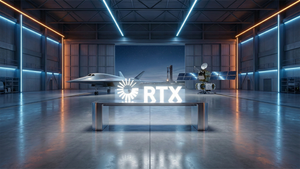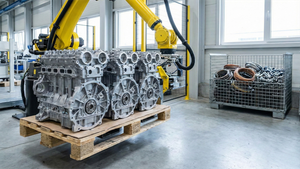LONG BEACH, Calif., Aug. 04, 2025 (GLOBE NEWSWIRE) -- STAX Engineering has received an executive order from the California Air Resources Board (CARB) to service tanker vessels, making it the first emissions capture and control fleet authorized to service all major vessel classes. The designation allows STAX to fill a significant compliance gap, enabling tankers to meet CARB regulations in Southern California beginning this year and across the whole state by 2027. With numerous tanker terminals and customers lined up—including Olympus, Shell, and MOL Chemicals—STAX is positioned to lead this emerging market, delivering flexible emissions control without retrofits or costly port infrastructure.
Expanding service to tankers marks a significant step forward for both STAX and the liquid bulk cargo industry. Tankers transport over $800 billion worth of goods globally—from crude oil and chemicals to liquefied natural gas—but have been unable to use shore power due to safety risks from their volatile cargo. CARB's Ocean-Going Vessels At Berth Regulation took effect for tankers at the Ports of Los Angeles and Long Beach on Jan. 1, 2025, and will expand to all California ports in 2027. STAX received approval for four barges in its inaugural executive order—STAX 1, 5, 7 and 8—establishing it as the largest fleet in the industry and most practical compliance solution for tankers.
“Servicing tankers is a transformative moment for STAX and the industry,” said Mike Walker, CEO of STAX Engineering. “Tankers are the backbone of global energy infrastructure—with over 1.3 million barrels of crude oil alone arriving just in California ports daily—yet they’ve lacked a safe, practical solution for meeting rising emissions standards. Our technology fills that gap. It helps operators comply with regulations while improving air quality for surrounding communities. This isn’t just about today’s requirements; it’s about building a foundation for cleaner operations going forward.”
STAX’s ability to safely service tankers stems from its mobile, barge-based emissions capture and control system. Unlike shore power, which requires costly infrastructure upgrades, STAX’s technology connects directly to a vessel’s exhaust system without any modifications needed. There are no electrical hookups, no retrofits, and no disruption to port operations. The system captures exhaust from auxiliary engines, removing up to 99% of particulate matter and 95% of nitrogen oxides while complying with strict tanker safety protocols. It is a solution designed specifically for the safety and complexity of tanker vessels.
“At the cornerstone of our operation are three pillars of safety: protecting people, the environment, and cargo integrity,” said Frank Strasheim, Director of Health, Safety, Environment, and Quality (HSQE) at STAX. “Our commitment to strict safety protocols and continuous risk management is essential to maintaining operational excellence and regulatory compliance across all aspects of vessel activity—especially when it comes to the unique design of tankers and the gravity of cargo they carry.”
The operational flexibility provided by STAX’s mobile design gives tankers a practical alternative to shore power. Container ships, autocarriers, and tankers across five main California ports are already experiencing STAX’s key advantages, including uninterrupted cargo operations, no significant capital investment, simple hourly service fees, and full compliance with emissions and safety regulations. Operators can stay on schedule, meet evolving environmental standards, and avoid vessel modifications altogether.
STAX is already working with leading tanker terminals, operators, and shippers across the liquid bulk cargo sector. STAX has exclusive agreements servicing all tankers calling at berth F209 at the Olympus Terminals facility in the Port of Long Beach, as well as at Shell’s Mormon Island Terminal in the Port of Los Angeles, and will be working with MOL Chemical among other customers. These companies are leveraging the technology to reduce at-berth emissions without compromising safety or efficiency. Since early 2024, STAX has treated 1,192 vessels for a cumulative 25,000 hours, capturing 190 tons of pollutants with nearly 1,000 hours already dedicated solely to tankers.
“Safety and operational reliability are non-negotiable in our industry, and STAX delivers on both fronts," said Vince Godfrey, CEO at Olympus Terminals, one of the largest independent petroleum and renewable fuels storage providers in Southern California. "Given the complexities of tanker operations, we need a partner who can integrate seamlessly and safely into our customers' port calls without disrupting operations. STAX provides exactly that; a practical solution without requiring retrofits that allows us to meet our environmental responsibilities immediately, rather than waiting for future technologies."
This milestone builds on recent STAX momentum, including $70 million dollars in funding dedicated to scaling the company. To meet growing demand, STAX will have a fleet of 27 operational barges and presence in all California ports by 2027 when tanker emissions regulations expand to Northern California. Today, STAX operates in the ports of Long Beach, Los Angeles, Hueneme, Benicia, and Oakland; is the sole approved on-call provider at the Port of Los Angeles, and works with a robust list of shipping clients, including ZIM, Hyundai GLOVIS, and NYK.
The tanker launch also marks a moment of global momentum for STAX. The company recently secured £1.1 million in UK government funding through the Clean Maritime Demonstration Competition for the PortZero project, a collaboration with Seabound, Associated British Ports, and Lomar Shipping. In September, STAX will further its international presence at London International Shipping Week as demand continues to rise for scalable emissions solutions amid tightening global maritime regulations.
About STAX Engineering
STAX's patented, flexible exhaust capture system is designed to fit all ships without modification, even in the most congested ports. Once the exhaust is captured and funneled into the STAX system, it is filtered. STAX removes 99% of particulate matter (PM) and 95% of nitrogen oxides (NOx) before being released as purified gas. To date, STAX has treated 1,192 at-berth vessels for a cumulative 25,000 hours and 190 tons of pollutants—and counting. In 2024, STAX was named a winner of Fast Company's Next Big Things in Tech, recognizing its innovative contributions to emissions reduction and cleaner air solutions. Learn more at www.staxengineering.com.
Media Contact
LaunchSquad for STAX
stax@launchsquad.com
A photo accompanying this announcement is available at https://www.globenewswire.com/NewsRoom/AttachmentNg/0ead39df-7c9e-4ece-aaa7-1996293ab162







